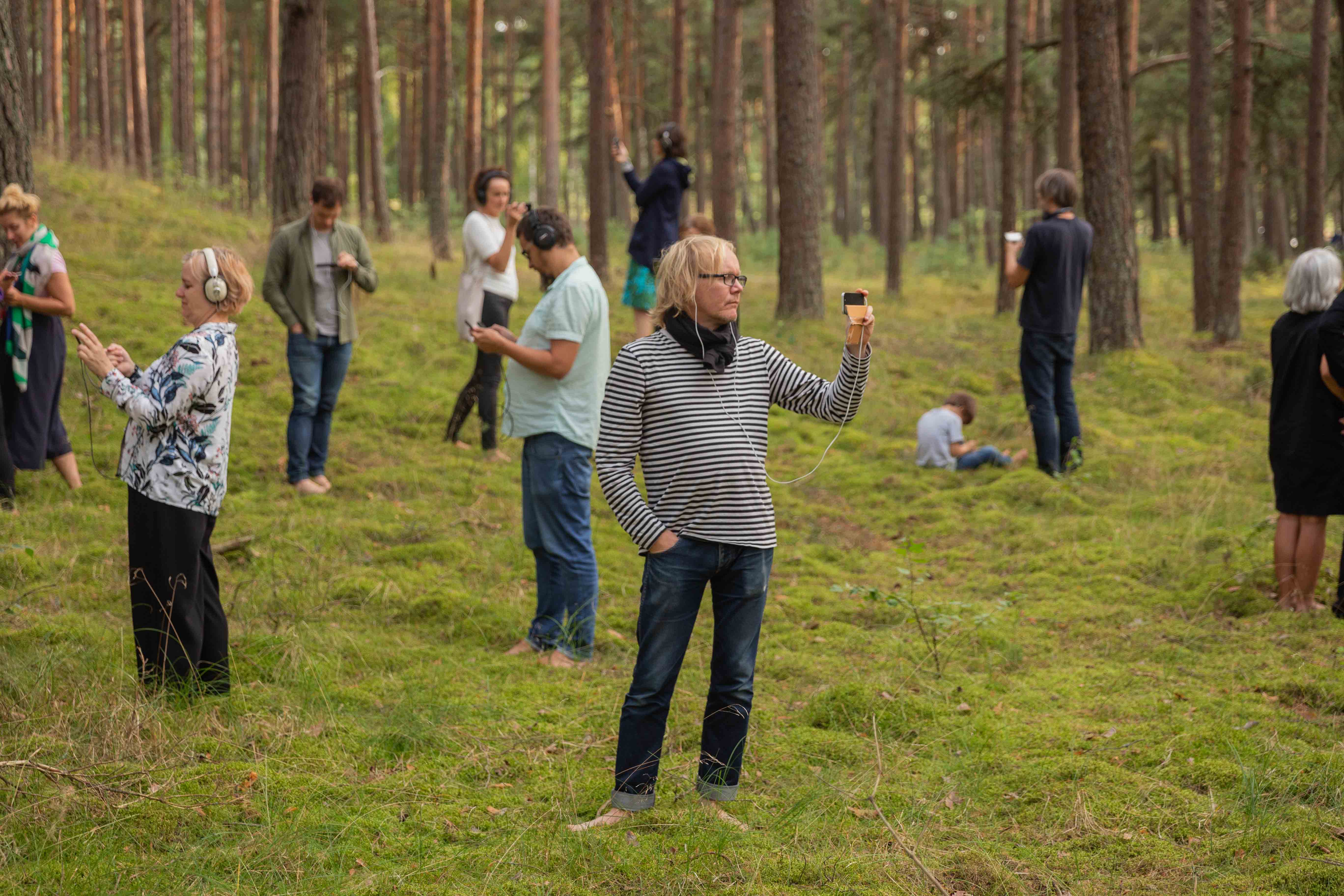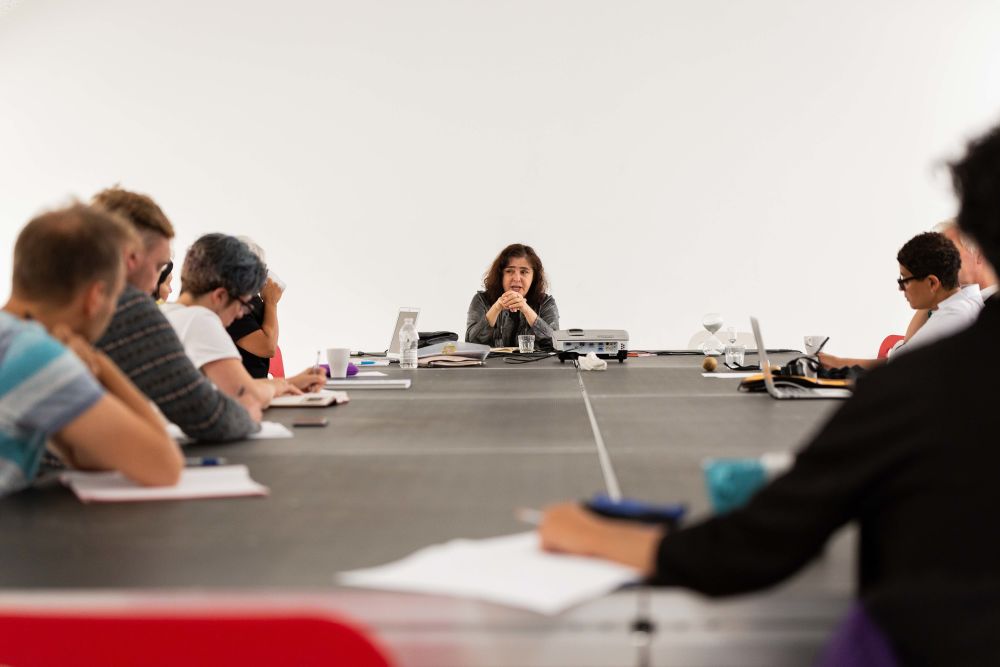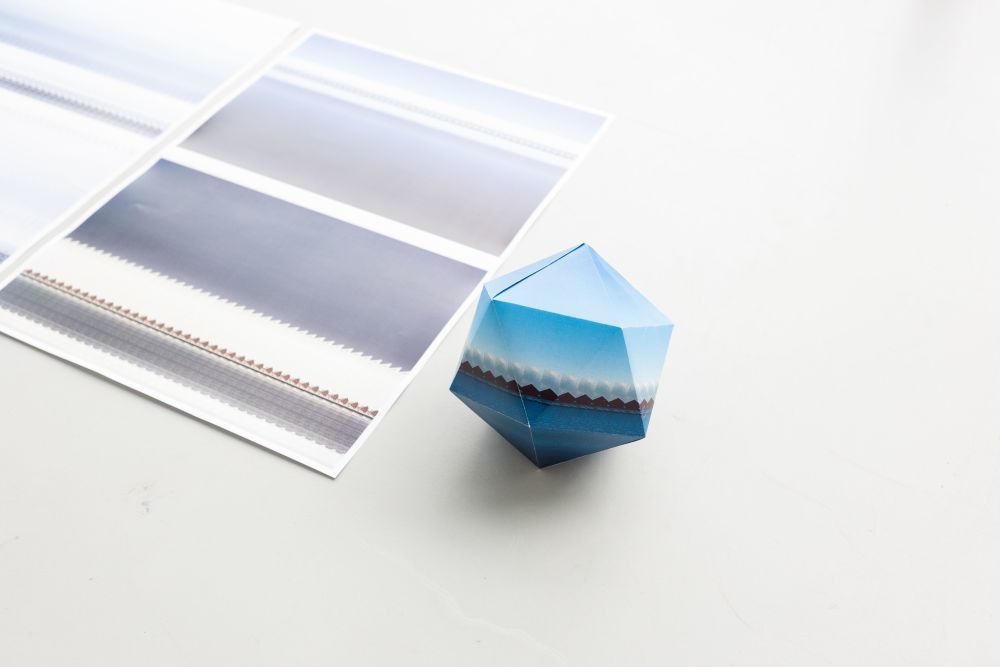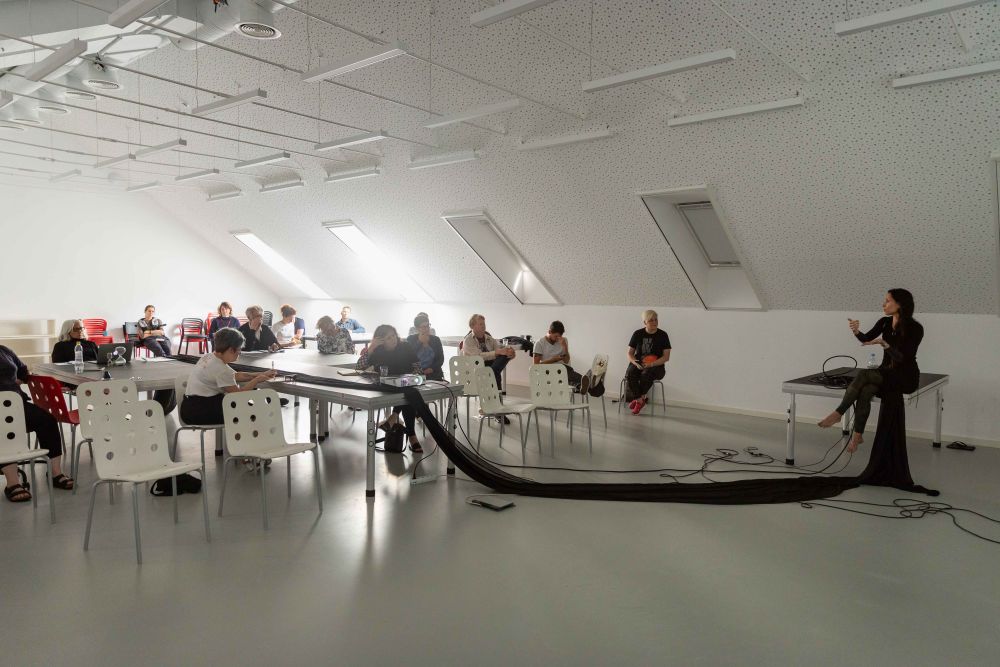UAL postgraduate students Maja Grakalic (CSM) and Jenna Rossi-Camus (LCF) were participants of the 2018 Nida Doctoral School “Naked on the Beach”.
Since returning from Lithuania last summer, they kept in touch while working on their practice-based PhD projects. Recently they met up to reflect on the experience and share advice for those wishing to apply this year.
JRC: Maja, what made you apply to the Nida Doctoral Residency last year?
MG: I haven’t heard of Nida before the call for submissions was sent out. What drove me to apply was the topic on how to expose and perform artistic research. I was at the point in my research where I was buried in books, doing a lot of archival research which is a very solitary endeavor. I needed a space to start think about the role of my practice and how it sit within my research and how to you communicate it to the wider audience in a more engaging way. I think the word performance was what intrigued me. Even though I’m looking at critical design practices, through Neue Slowenische Kunst, one of the case studies I’m looking at, performance started slowly emerging as potentially very relevant practice and NIDA felt like the perfect place to explore that new avenue. Finally, it had to do with the location, location, location!
JRC: Had For me as well, the call for applications came at a time when I was just writing and felt distant from the practical dimensions of my research. I remember it was a particularly cold and grey day in London when the call for applications to “Naked on the Beach” arrived with a lovely image of the seaside. Had you been to Lithuania before?
MG: No, I haven’t been to Lithuania before. It was a big surprise to learn that there is an art colony in the middle of the sand strip full of sand dunes in a UNESCO world heritage site. When I got accepted, I was obviously very excited about it, and discovered that some of my artist friends and PhD colleagues from my alma mater Goldsmiths UoA, knew about it and have done residences before. NIDA felt like a secret sanctuary.
JRC: I also had never heard about NIDA before, but my director of studies Agnès Rocamora knew about it because she had been an examiner for a fashion research PhD at the Art Academy of Vilnius so was familiar with NIDA and its reputation as a place that supports artistic research and - of stunning natural beauty.
What did you really set out to achieve? Did you have an idea about what you might do during the experience to kickstart your practice?
MG: Not really, I just wanted to get inspired and expose myself to whatever comes! Calling the program “Naked on the Beach” was a sensational selling point. When arriving, we were asked to present our research in a creative way. I didn't really do it. I stuck to my PowerPoint presentation but looking back at it I wish I was a bit more adventurous and experimental because it was a space that allowed and accepted that everybody was at a different place in their studies. I benefited from individual tutorials with visiting lecturers, their different perspectives and insights from very practical advice on being strategic about choosing your case studies according to the career you see yourself doing after the PhD, to identifying wider application and value of the research.
JRC: There was such a wide range of practices among the group. There were visual and performing artists, designers, curators and even a musicologist. It was wonderful to be in a situation with no hierarchical divisions between the disciplines and everyone’s approach to artistic research was held on the same plane.
MG: Yes, I think that was the biggest benefit for me actually. I saw other people’s work that was highly experimental, and it opened my mind to be bolder in thinking about how I might approach research as a designer.
JRC: Not only among the participating students, but among the tutors and speakers there was such integration and openness. It really felt like a colony – physically and conceptually.
MG: It was all about community - about sharing everything from sleeping arrangements to meals to the lectures and activities. But there was also space to be alone, to take walks to gather your thoughts.
JRC: The balance between group time and alone time was really healthy. The physical grounds feel secure and intimate but then the surrounding area has so much to offer. I feel that there's something about the colony having really defined boundaries that allowed me to create my own your own space and my own time even while participating in the Doctoral School.
MG: But you can say more about that because you were there longer than the one-week residency.
JRC: I had the opportunity to take advantage of one of the longer-term residency spaces at the colony for one month prior to the Doctoral school. I had my own live-work space for the whole duration. I needed to construct the practical part of my PhD (a large handmade book) over the summer and don’t have a studio space to do this in London. Being able to take advantage of a private working space free of distractions was the primary factor that made me feel that I got a lot done towards my research. To be away from distraction and be immersed in nature was unusual for a real city person like me. I had more work space than I knew what to do with. I was sort of sequestered for weeks and then when the rest of the participants arrived it was time to be literally naked on the beach which I hadn’t fully realised. The Nida Colony manage a sauna on the beach, and there were optional excursions to end the long days with nighttime visits there. So, there was definitely “exposition” both physically and conceptually in a way that actually felt very safe and very fun-loving. There was of course intellectual intensity with people talking about their practice and with being critiqued, and their methods being challenged. But it always felt extremely respectful and constructive.
MG: I found it such a benefit speaking to the tutors one-on-one which was part of the programme. It was set up so that everyone everybody who was part of the convening team at some point lectured and then there were tutorial hours.
JRC: After working so closely with my supervisors for three years, and then to suddenly expose the research to new readings was a big eye opener for me. Not just in the way that we were challenged to present our work but to present to experts and a peer group of people who have amazingly different interests and talents and approaches. It provided me with an opportunity to see my work through some very different lenses. I was mid-way through my writing up year when I came into NIDA. I thought I was just going to be tying up ends and meeting new people. I did that, yes, but it also opened the work up and got me thinking in a positive way about what to do with the practice it after receiving a PhD for it (hopefully).
MG: A chance to consider “What is its life?” and to think about why artistic research can be so exciting.
JRC: As a result of the intensity of the communal experience and discovering common interests among the other students it was like smaller colonies of research were temporarily formed over the week. People were always helping each other and discussing their work and there was a lot of optimistic discussion about future collaborations.
MG: But maybe first we've got to finish our PhDs?
JRC: Yes, good idea. There are some collaborations on the horizon, and I’ve kept in touch with many of the other participants and hope to see some of them at conferences this year. For now, I would recommend that anyone considering spending their summer at NIDA apply with an open mind and know that no matter what you expect from the experience you’ll also get something different out of it.
Maja Grakalic is a designer, design researcher and a jazz lover from Croatia. Trained as a products and motion graphic designer, with MA in Critical Design practice from Goldsmiths UoL, she’s interested in championing design as a tool for critical thinking and engaging the public around political issues. She’s currently conducting her PhD research awarded by the London Doctoral Centre (AHRC). Her project attempts to decolonise critical design discourse, and explore the radical potential of historical design methods and strategies.
Jenna Rossi-Camus is a curator and exhibition-maker with a background in theatrical design and illustration. Her doctoral research, within LCF’s Centre for Fashion Curation focuses on developing a proposal for a site-responsive fashion exhibition at Strawberry Hill House. The practical element of her PhD culminates in the construction of the exhibition proposal in the format hand-made large-format book that revives the eighteenth-century bibliographic practice of extra-illustration.
Nida Art Colony is an art and meeting space. As a resourceful platform, it runs an Artist-in-Residence Programme, Nida Doctoral School, which is now taking applications for 2019.
Gallery
Artist Biographies
Maja Grakalic is a designer, design researcher and a jazz lover from Croatia. Trained as a products and motion graphic designer, she’s interested in championing design as a tool for critical thinking and engaging the public around political issues. She’s currently conducting her PhD research awarded by the London Doctoral Centre (AHRC).Her project attempts to decolonise critical design discourse, and explore the radical potential of historical design methods and strategies.
Jenna Rossi-Camus is a curator and exhibition-maker with a background in theatrical design and illustration. Her doctoral research, within LCF’s Centre for Fashion Curation focuses on developing a proposal for a site-responsive fashion exhibition at Strawberry Hill House. The practical element of her PhD culminates in the construction of the exhibition proposal in the format hand-made large-format book that revives the eighteenth-century bibliographic practice of extra-illustration.
Photos by Andrej Vasilenko, Karolina Sadlauskaitė, and Arnas Anskaitis






